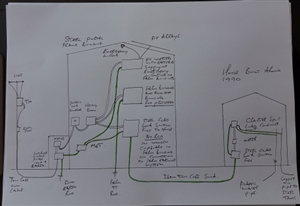
Some years ago I started doing electrical work at a farm, originally the farm buildings and house were both connected to the DNO earth terminal.
I altered it so that the farm buildings are TT , but left the house connected to the DNO earth terminal. The possible issues are that there is a steel clad switch fuse enclosure for the house inside a wooden cupboard in the farm workshop and the SWA cable for the house passes through the ground immediately adjacent to the farm building. But there was no physical connection between the house and farm earthing arrangements.
It had been like that for a few years as the house has not had any alterations at all, just a few repairs. So the house installation is effectively exactly the same as it was when the house and the farm buildings were thirty years ago and connected up as a new installation by the DNO.
However (you knew there was going to be a however!) a couple of years ago PV panels were installed on the farm building roof and the installers used the DNO and house earth terminal rather than the farm buildings earth terminal, despite the PV system being in and on the farm buildings and it having storage batteries that feed back into the both installations as they share a meter; and the storage batteries act as a supply to emergency lighting in the farm buildings when the installation is off-grid.
I am now reviewing the earth arrangements, the house is empty and needs tidying up, thirty two lights need replacing and odd repairs, there won't be any alterations it is just replacing fittings and replacing MCBs in the split load consumer unit with RCBOs to give additional RCD protection in the house.
I will leave it at that and not express my thoughts, as it will be more interesting to see what your thoughts are rather than trying to get you to consider mine.
Comments please.
Andy B

